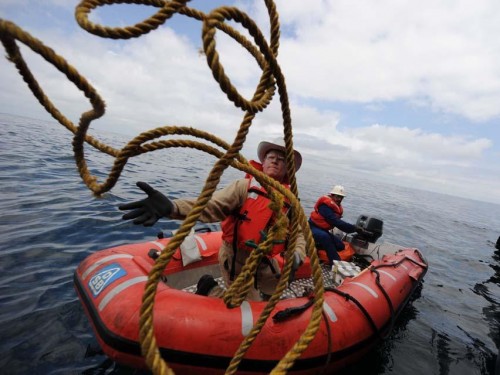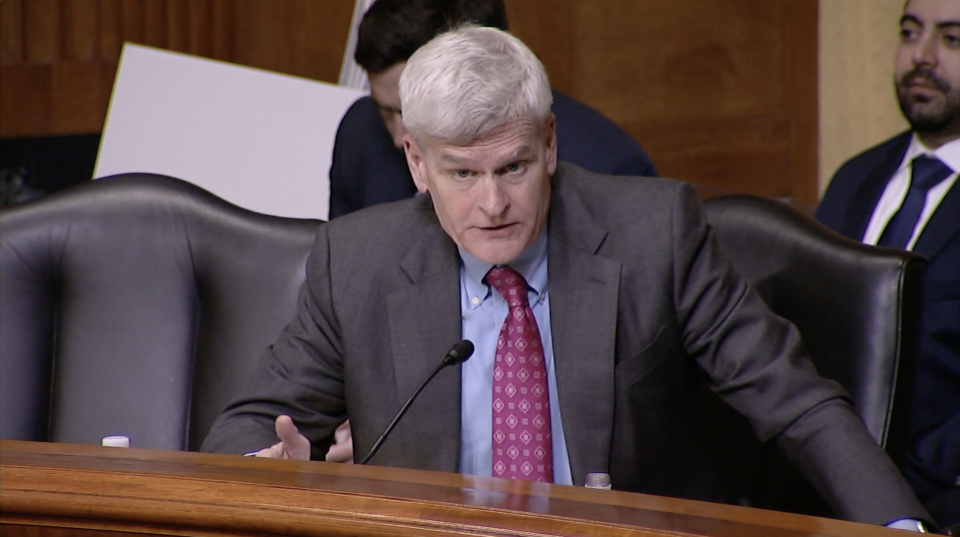
T’bonne businesses consider post-hurricane recovery plan
May 11, 2010Thursday, May 13
May 13, 2010As oil could be encroaching closer and closer to Lafourche Parish, officials have worked diligently to keep oil out of the parish’s marches.
At press time Monday evening, Lafourche Parish Public Information Officer Brennan Matherne said a light sheen of oil was found 10-to-14 miles off of Lafourche Parish’s coast, with no medium or heavy oil found anywhere in the parish’s vicinity.
Matherne added a projection shows that the oil could move closer to the coast in the next few days, but even the experts aren’t sure.
In case the oil moves closer, Lafourche Parish is taking precaution.
“We decided our best option right now is to use our sandy beaches as a natural barrier to protect our wetlands from the oil,” said Lafourche Parish President Charlotte Randolph. “It’s a lot easier to clean oil off the beach than out of the marsh, so we are working to close off all breaches along our coast where the beach has been washed away.”
Large truckloads of sand were delivered to Port Fourchon Sunday, and parish workers began making giant sandbags.
Monday, National Guard helicopters from the 928th Engineer Company began airlifting the sandbags to five areas along the parish’s southeastern coast where the beachfront has washed away.
“So by sandbagging those areas, we’re basically forming a 15-mile sandy or sandbag barrier across our coastline to protect that area,” said Matherne.
Each bag can weigh up to 4,500 pounds and be six-feet wide.
“Other than protecting the marsh, access in and out of Port Fourchon and Bayou Lafourche is obviously our other major concern,” said Chett Chiasson, Executive Director of the Greater Lafourche Port Commission. “If necessary, our current strategy is to place boom along Belle Pass in Bayou Lafourche to create a ‘decontamination station’ for ingress and egress through the port.”
One positive byproduct of keeping oil out of the marshes and Bayou Lafourche would be sustaining the local, inland seafood industry.
“Right now, if you look at the closings that have been made, they’re from the beach outward,” said Louisiana Seafood Promotion & Marketing Board Executive Director Ewell Smith. “That means our inland waters are still wide open.”
Although Louisiana Department of Wildlife and Fisheries (LDWF) have closed fishing areas 14 and 15 in lower Lafourche and Terrebonne Parishes respectively, Smith said inland Louisiana seafood is still safe to consume.
“Sixty percent of our oyster production is still wide open,” said Smith. “When you start looking at other species like crawfish, catfish and alligator, those are still 100 percent.”
Smith added losing 40 percent of Louisiana’s oysters will most likely create a price increase, but he hopes LDWF opening shrimp season early in the western portion of the state will help compensate the price increases.
“We’re still going to have production of all of our seafood it’s just not going to be as strong as normal years,” said Smith.
He added the Louisiana Seafood Promotion & Marketing Board supports all precautionary closings, because customer safety is still the first priority.
“Zero tolerance will be enforced in making sure no product goes to market from those areas – no matter where it is in the state,” said Smith.
Even though Smith said Louisianans know they can trust the Louisiana seafood served on their table, he said creating that national perception will require more work.
“The people around coastal Louisiana understand our fisheries, but as we try to explain this to the rest of the nation, it makes it a little more difficult,” said Smith. “There is concern across the nation as to whether our seafood is safe, and we know here in Louisiana it is, so we need to do whatever we can to communicate that nationally.”
Donnie Wilson, CEO of Elastec Inc. American Marine, secures a line from the Marine Vessel Premier Explorer prior to the controlled burn of gathered concentrated oil in the Gulf of Mexico last week. * Photo by Petty Officer 2nd JUSTIN E. STUMBERG / U.S. Navy









